After a night at Erldunda, we’re off to Mount Dare and the start of the Madigan Line – Dr Cecil Madigan’s epic crossing of 1939. (The first vehicle crossing was only in 1975. That’s in our lifetime for the younger readers!)
At Kulgera, after an early mornos under its bar of bras, we turn off the Stuart Highway onto the Finke track.
Corrugations, but at first its ok.

Gould’s Goanna skitters across in front of us, head held high. I scrabble out of the car, keen for a photo. The English contingent stay put, keen to see me getting bitten. Much to my surprise and delight the lizard stops skittering in a bush. I creep forward. It has found a friend and invites it to lunch. Not interested in me now, it lunches at its pleasure. But at the end there is no friend.
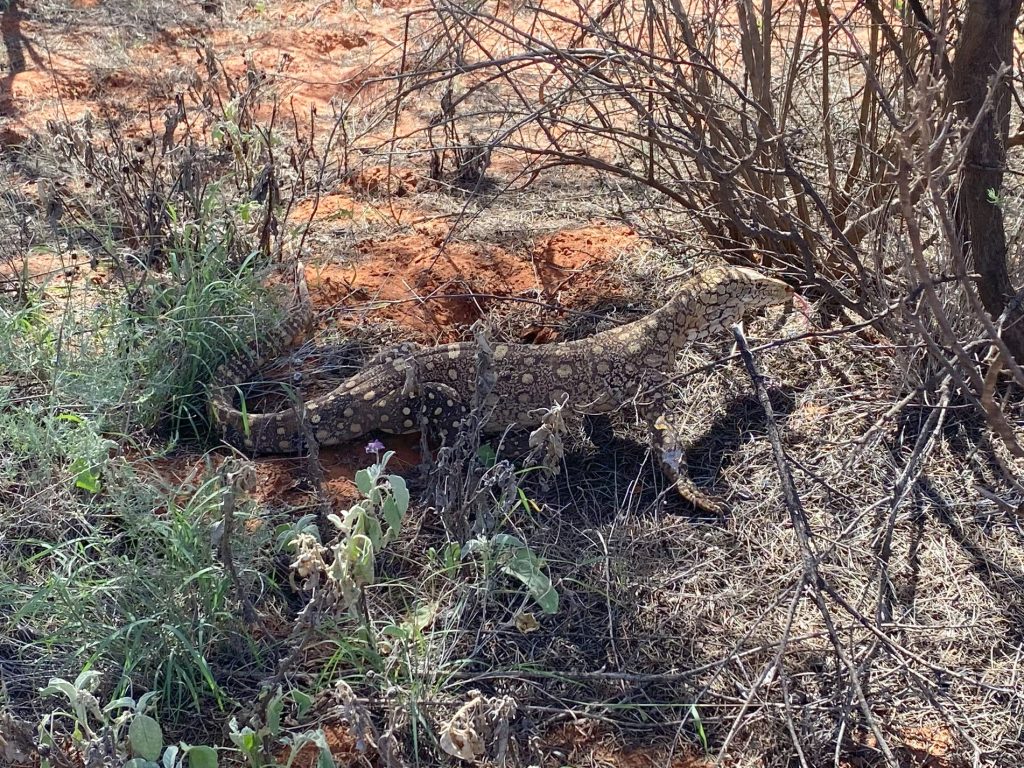
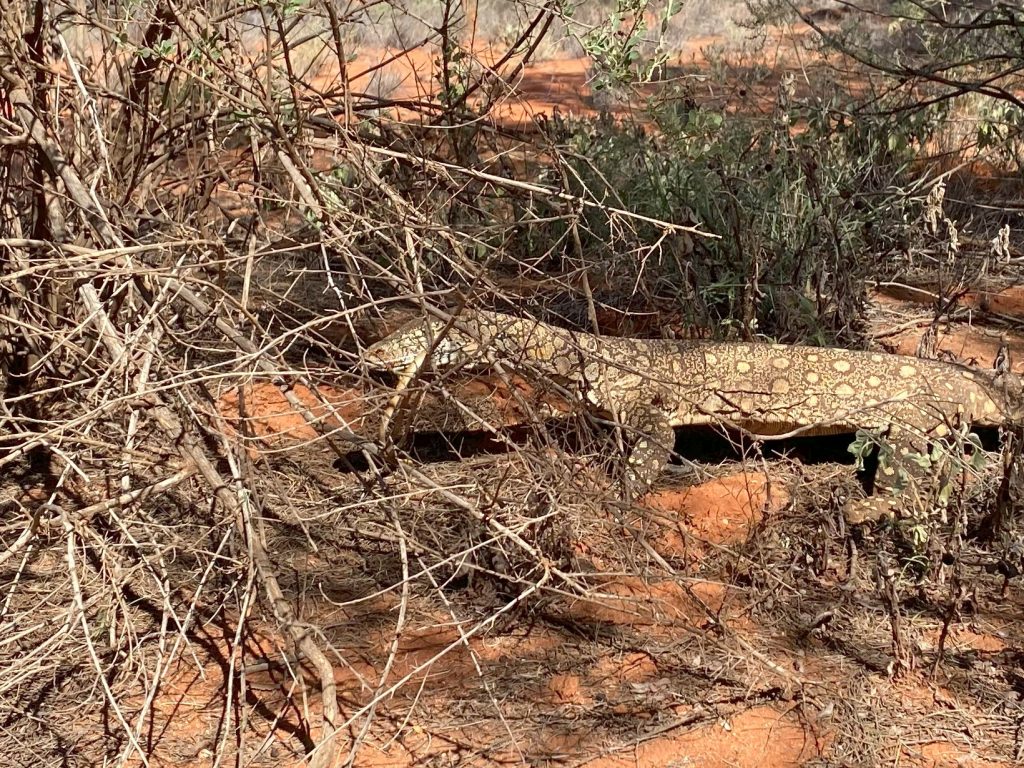
On down the Finke track. In places it opens out to empty. The Pedirka desert – a flat stony nothingness. If you wanted to make a conspiracy movie about Land Rovers on Mars, you couldn’t find a better place. John and I are both going a bit deaf. Above the noise of the 3.9 litre Isuzu diesel, we chat companionably, probably because we’re not really aware what each other is saying. An example. ‘Dust devil!’, says John, jabbing his finger at the windscreen and a distant swirling column of sand. I quickly pass him a cloth, wondering why he needs a duster so urgently.

Twenty kilometers further and we are amid green pasture. Difficult to convince anyone we were even near a desert. At midday, twelve kilometers to the left of our track is Lambert’s centroid. Should we visit it? James declines. Close enough for 2 RTR recce map-reading, I suppose. ‘Who is Lambert and what is a centroid?’ Guy wants to know. Sounds very like a medical condition, but it’s supposed to be one of the centres of the geographical mass of Australia. Even the senior school with their years of technical training have no idea about the centroid bit. We mutter lots about the need to look it up when we have reception and move on.
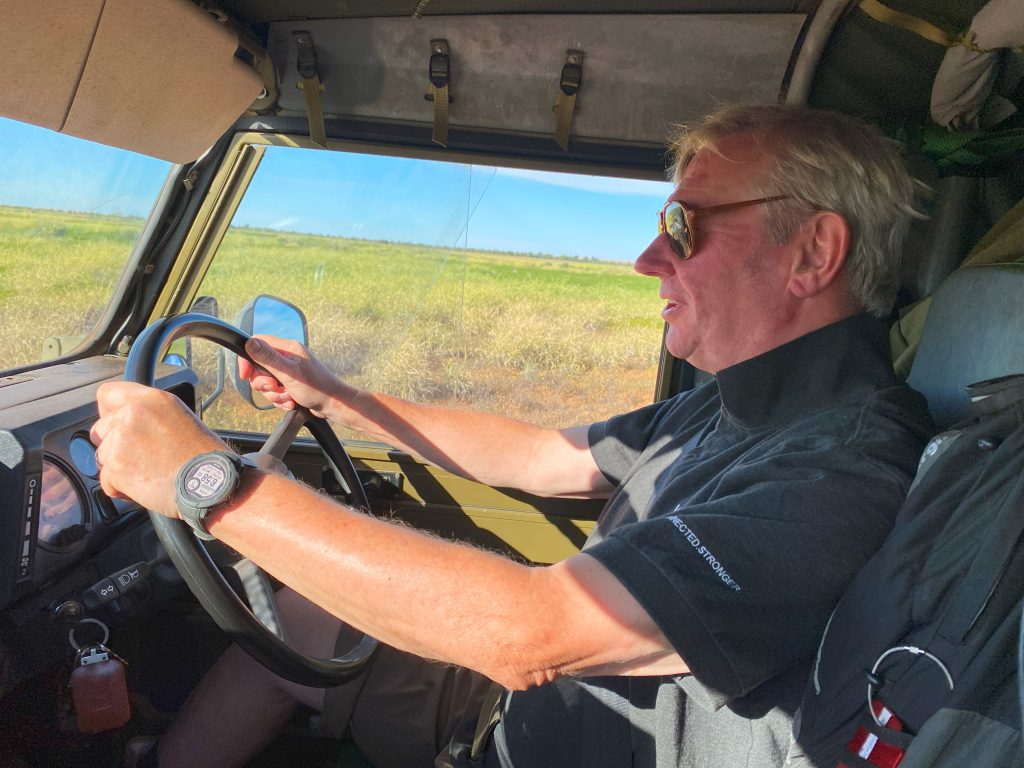
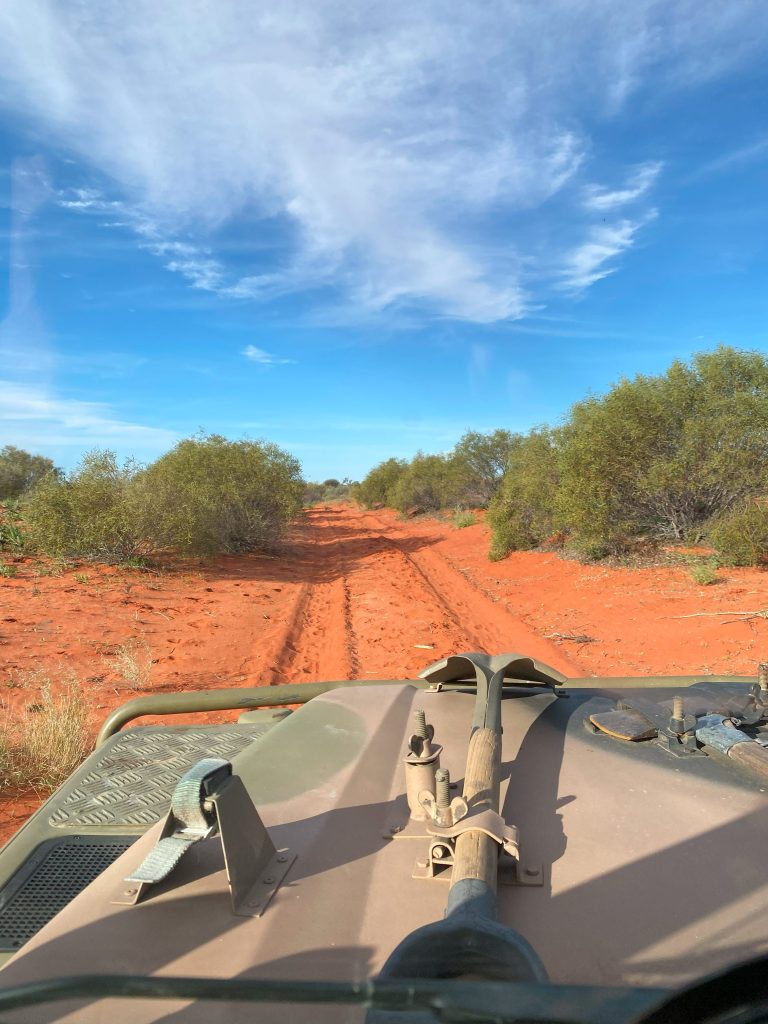
After the track passes the aboriginal community of Finke – where we don’t stop – it gets steadily worse. Ruts and washouts, the evidence of the recent downpours, grow as it edges towards Mt Dare.
Guy loves it; ‘Great fun, really interesting drive’, he says stretching his large frame out of Joy at the end of the day.
I am just glad the vehicles are in one piece.
Mt Dare (no mountain unless you call the top of the flood levee one) is frontier town. A bar, a generator, a servicing shed, recovery trucks, some cabins, corrugated-iron loos and showers and a campground; it has all we need. The staff are friendly and helpful, and they are also the font of all knowledge of tracks, open and closed.
At the bar they confirm what we’ve learned from my friend, Elliott, in Mount Isa. The Madigan is open to Camp 15, and the Hay River Track is also a goer. Elliott’s buddy, who looks after the Donoghue Highway – the unsealed Queensland end of the Plenty Highway, says it is open. This is our planned escape route from the north of the Simpson. All of this makes an easier and more timely route back to Brisbane than our longer, worst-case option, past Tennent Creek and along the Barkly Highway.
James, the Mount Dare mechanic, and a four-Simpson Crossings old hand, lends me a grease gun and offers advice. He reckons we won’t hit serious dunes until Madigan’s Camp 5. The first 100 kilometres up the Binns track, he says, is fairly straight-forward – good for fuel consumption. I calculate and recalculate the fuel and water capacity. The figures are looking better.

We have a last supper in the bar. Guy with his penchant of pies tries one and professes it good. Conversation turns to a Venn diagram of likelihoods. Four old British Army veterans are in one circle. Two old ex-military Land Rovers are in another. The Simpson desert is in a third. We conclude smugly that we are the first and only ones to have claimed this centroid. Of course, off to the side is another circle; of people who know or care. It doesn’t intersect. James waxes lyrical about his early days in the Army. ‘Of course, I was quite opinionated back then.’ Really, James? You do surprise us!


The next morning we linger over a last coffee on the edge of civilisation. After this we are on our own. Well, not really; we have a satphone and each other to eat if things go really bad.
Out of Mount Dare the Binns track heads north into what is supposed to be desert. Again, like yesterday, the rain here has made everything green.
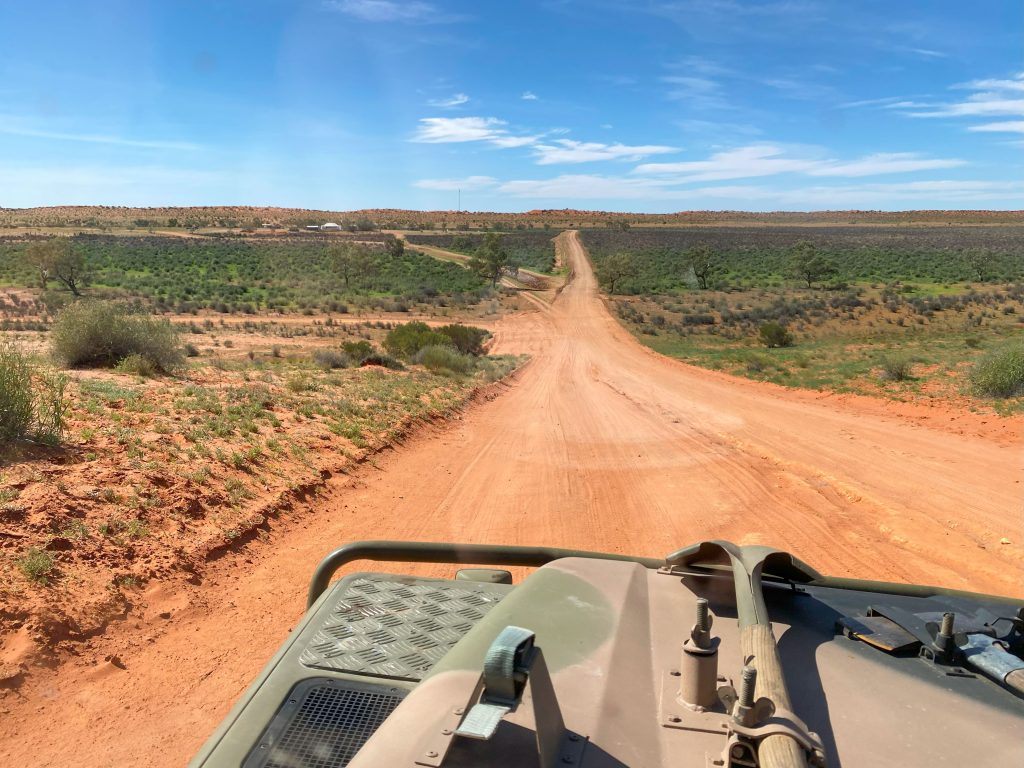
We stop at Old Andado station, made famous by Molly Clarke, a pioneer who lived in the 1950’s outback retro house. It’s preserved as a museum, much as she left it.
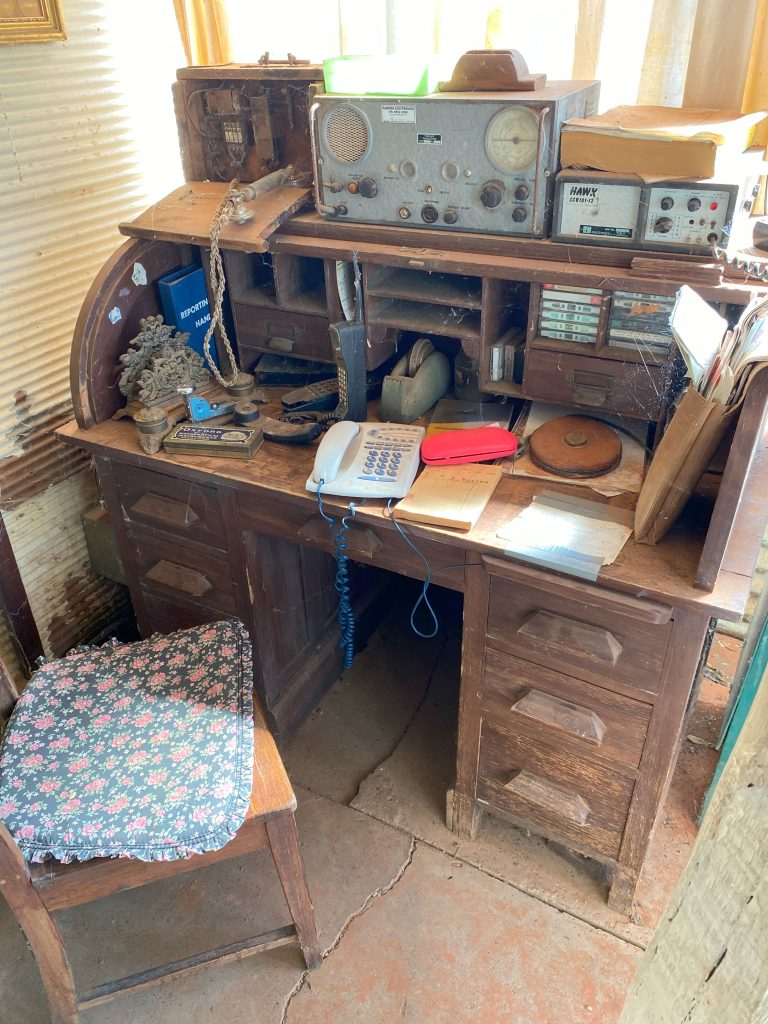
Beyond it, is Mac Clark conservation area of waddywood trees – Acacia peuce for the gardeners amongst you.
What they are not conserving is barbed wire. Miles of fencing run confusingly round and through it. And our HEMA guided route goes right through lots of it.
We find away around and through most; confronted at the last by one that has been breached before. A bit of Moggill-practised unfencing sees us through. No British Army of the Rhine damage control party following us here, so we put it back together and are on our way.
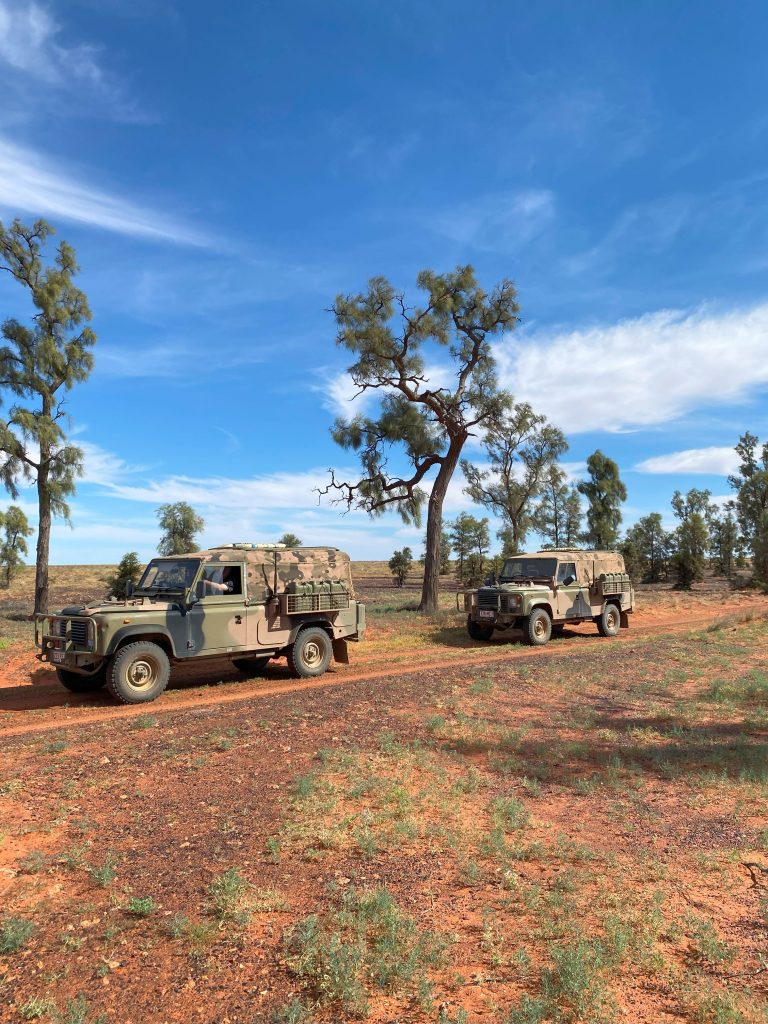
We pause at Madigan Camp 1a (Camp One being closed to public access) and then, not keen to hang around in fly territory, push on a further 60 kilometres to the area of Madigan’s Camp 5.
The track changes endlessly; this moment stoney, the next sandy, then full of dips and now squeezing between brilliant green Mulga trees, too narrow for our mirrors, then opening to meadows of green on the red sand dirt.
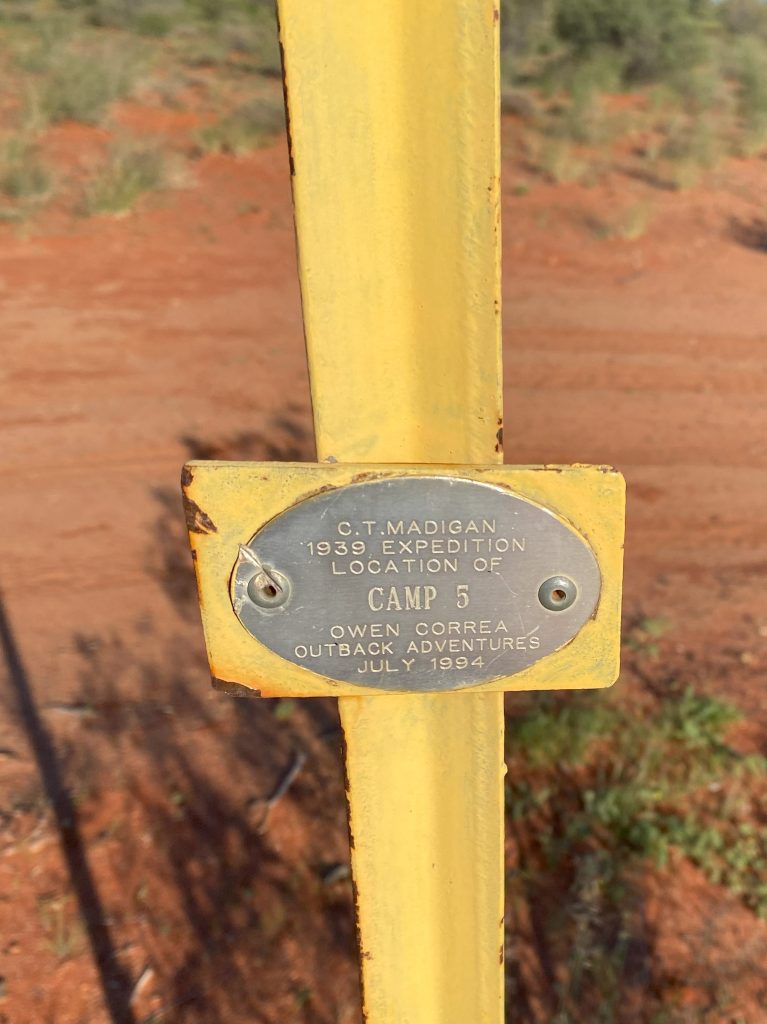
Just before sunset we arrive at the Coulson track cross roads and halt for the night. A patch of flat sand makes an inviting swag pitch We establish ‘Old Crocks camp 1’ and soon after dark the flies disappear.

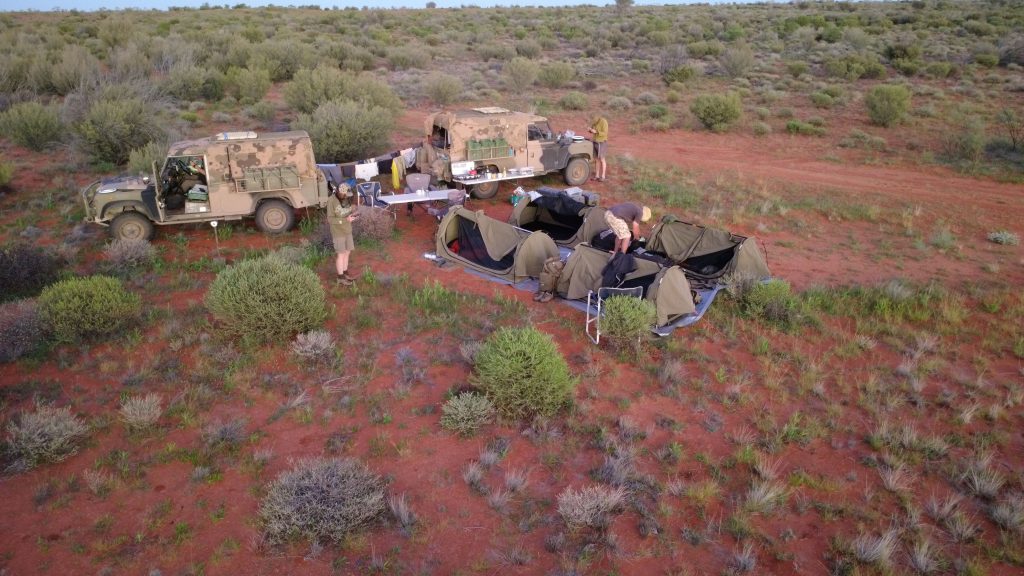

‘Going’, of which I’ve written much early, now takes on its own reality. We decide against the spinifex camp loo seat (which I would have loved to set up in the middle of the cross roads!). The junior dorm resist the idea of siting in a small blue tent in the middle of nowhere when the nearest person is probably 200 kilometres away. Common opinion is that a shovel recce is more appropriate. Wandering off in the early morning darkness, I realise how easy it is to get lost in the desert. I haven’t gone more than 25 metres through the scrubby brush, but when I’ve finished I’ve lost the Land Rovers. I crouch looking for their square outline. Nothing. A circle search does eventually find them, and I also find its quite fun setting fire to loo-paper in the dark! (P.S. there are no pictures of this event.
The one thing that hasn’t disappeared is the reason for this trip. We’re doing it to raise money for four charities that look to the future for disadvantaged children and remember the past through those in need who have served in our two countries’ armed forces.. So please help spread the message about the charities we’re supporting by sharing the link or our gofundme page and help the contributions to keep coming in. Every little helps.
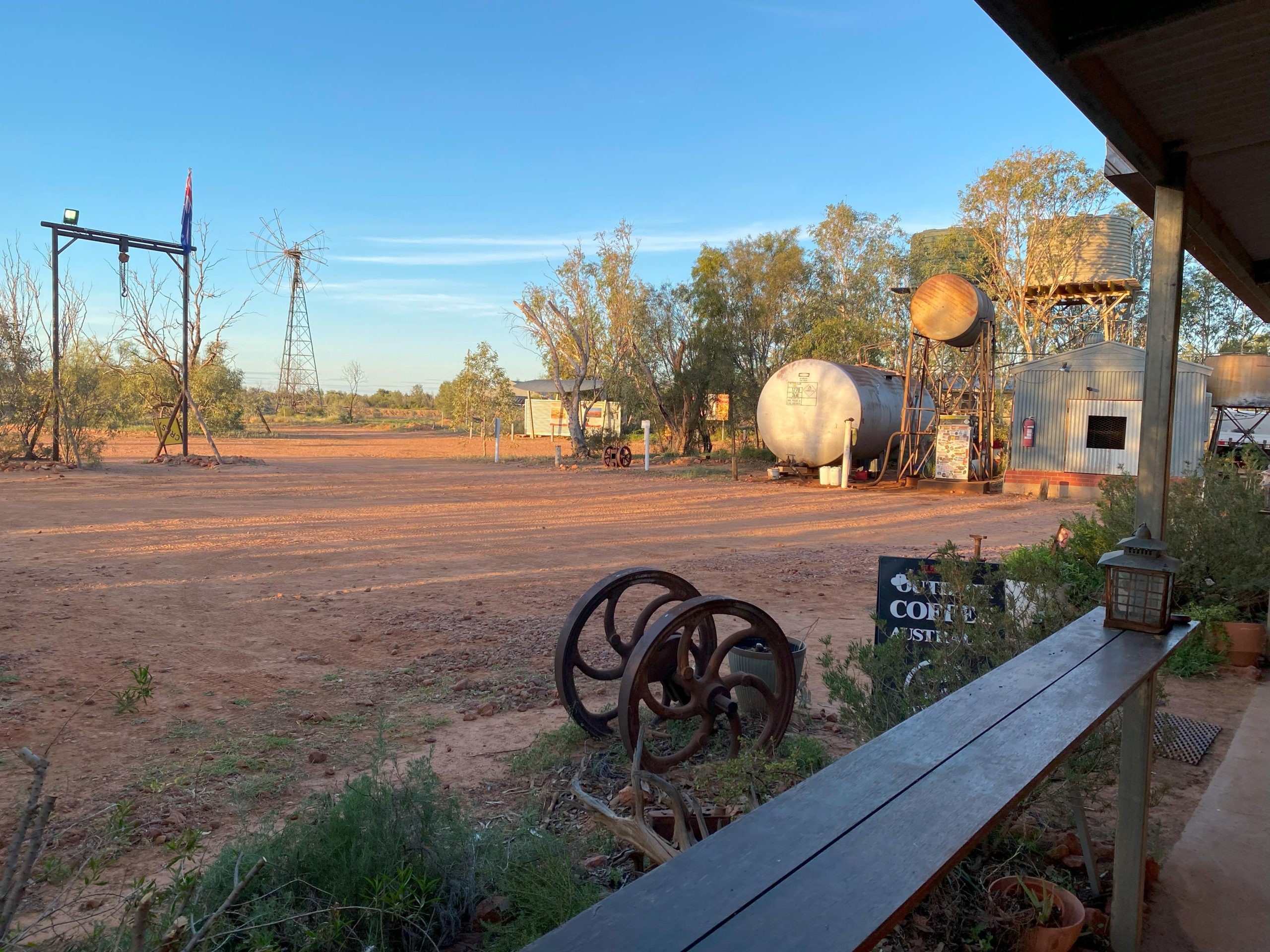
Getting into the really fun part now! Stunning scenery. Good job on species and plant identification!
Were you feeling the cold in the bar at Mt Dare, Guy. The only chap in long sleeves! Aaahh – the flies, the flies. Great photos and commentary. The goannas would be tasty eating if you run out of food. However they are a protected species in Australia unless you are indigenous when you can kill them for sustenance and ‘tradition’.
Again, for the non-Oz readership, Mike and his mates are seeing something quite rare.
The Queensland rain/floods that gave rise to the replanning/rerouting of the expedition have also provided the rare opportunity to see a part of this “wide brown land” as few ever have a chance to see it – GREEN!!
The miracle of rain (in this case Queensland’s rain, not the Northern Territory’s) despite wreaking havoc on Queensland, has bestowed rare beauty on the landscape that few have the opportunity to see. Events like this happen once a decade (or less), and the photos are wonderful records of Nature working her magic. Enjoy them and make the most of this opportunity!
Well done, Mike!
Well Mike, you’ll have to do it again so you can see it in its “proper” colour scheme!